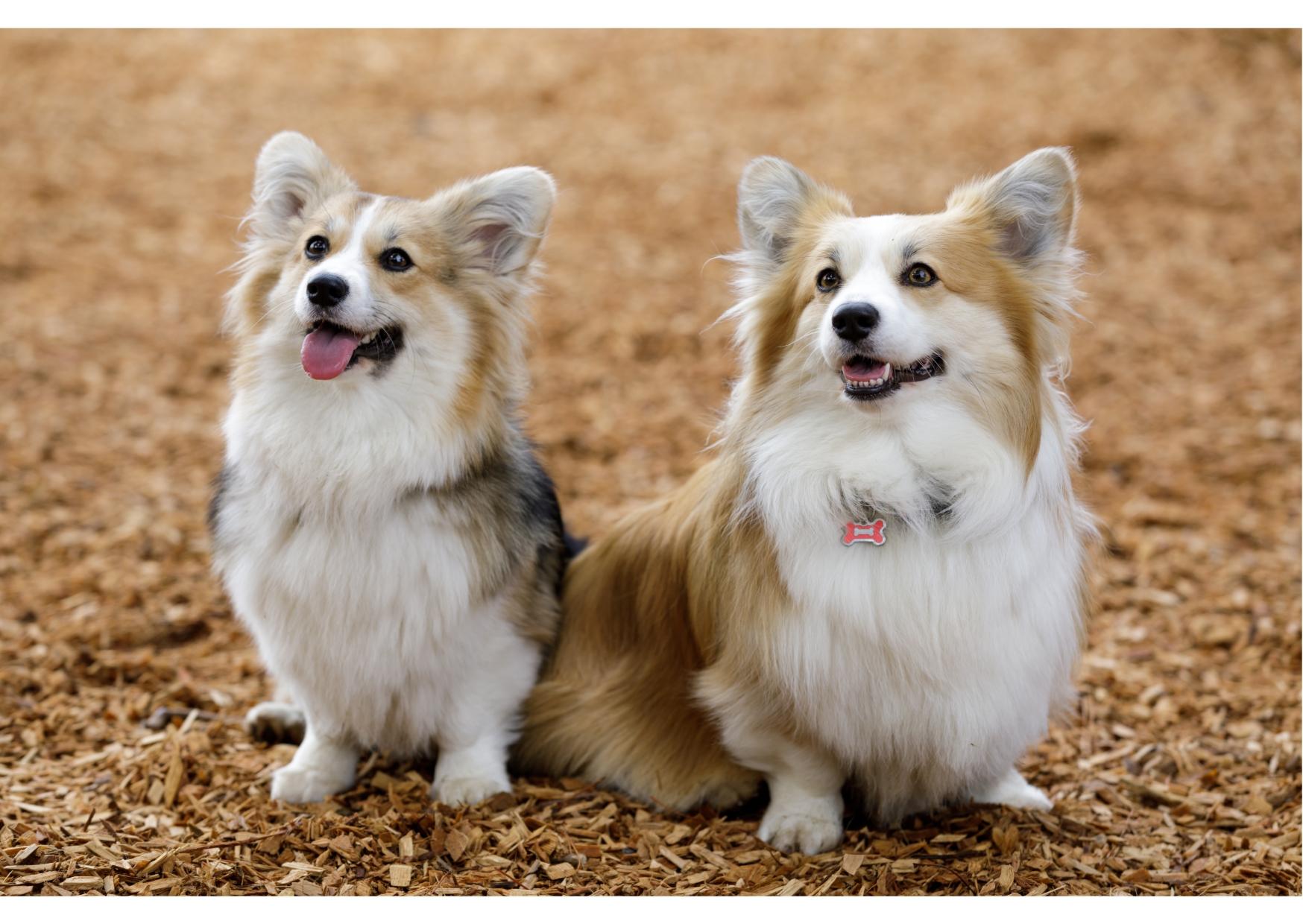PEMBROKE WELSH CORGI
| Group: | Herding |
|---|---|
| Size: | Small |
| Temperament: | Affectionate, Aware and Alert |
| Height: | 10-12 Inches (male), 10-12 Inches (female) |
| Weight: | 11-14 Kg (male), 11-13 Kg (female) |
| Life Expectancy: | 12-15 years |
| Origin: | UK |
| Coat Length: | Short |
| Coat Type: | Double |
| Color: | Black & Tan Fawn Red Sable |
About
A watchdog with a big bark for its size, sharp and confident. He is well-equipped for a demanding day's labour with short but strong legs, muscular thighs, and a broad chest. Pembrokes are built long and low, yet they are surprisingly swift and nimble. The Pembroke is a smart, sensitive dog who loves to play with his human family and takes instruction well. They are fearless and are self-reliant as they were bred to move livestock. Families who can fulfill their bold but friendly Pembroke's desire for action and companionship will never have a more devoted, loving pet.
Nutrition
The Pembroke Welsh Corgi should thrive on a premium dog food, whether it is made commercially or at home under the direction and approval of your veterinarian. They consumed rabbit, beef, fish and other regional foods while working as herding dogs in Pembrokeshire, Wales. They also consumed vegetables including cabbage, potatoes, and carrots. Including these foods in your corgi's diet can help him stay healthy. Watch your dog's calorie intake and weight level because some dogs are prone to obesity. Treats can be a valuable training aid, but giving them in excess can lead to obesity. Fresh water that is clean should always be accessible.
Ideal Meal Breakdown
Protein
36
Fat
20
Carbohydrates
36
Others
8
Exercise
The Pembroke Welsh Corgi is a sturdy, athletic little dog that was bred to herd cattle and other livestock. He enjoys physical activity and is happiest when given a task to complete. Moderate daily exercise is beneficial for corgis' physical and mental well-being. Pembrokes can run slowly or go for long walks with ease, but they can't keep up with cyclists because of their short legs. Ample amounts of cool, fresh water should always be available after exercise. Numerous Pembrokes excel at canine sports like agility, herding, obedience, and tracking competitions.
Grooming
A soft, light undercoat is covered by a thick, weatherproof outer coat on the Pembroke. The breed sheds moderately every day, and in the late spring and early summer, it sheds even more. Many of the shed hairs can be removed each day with a quick sweep of the house with a comb and slicker brush. A rake aids in removing the undercoat, and baths during shedding season help to loosen the dead hairs. The dog must be completely dry before brushing. Like all breeds, the Corgi should have its nails cut regularly, and its ears should be examined to make sure they are clean and in good condition.
Training
As with all breeds, puppy training classes and early socialisation are highly advised. Between the ages of 7 weeks and 4 months, the puppy should be gently introduced to a wide range of people, places, and situations to help him grow into a well-adjusted, well-mannered adult. Pembrokes are energetic, willing, and highly intelligent partners who take to training well despite their propensity for having their own minds. With this delicate breed, positive reinforcement-based training is most effective.
Health
Corgis have a long lifespan and are often healthy canines. However they are susceptible to some health problems, just as all breeds. Back discomfort, particularly intervertebral disc disease, is a prevalent ailment that can cause pain, weakness, and even paralysis. Obesity, which can cause joint troubles and other health concerns, is also common in corgis. They could experience eye conditions including cataracts or progressive retinal atrophy. A balanced diet and regular exercise are crucial for maintaining their health.Like all breeds, a Pembroke should have its teeth brushed frequently and have its ears checked weekly for indications of infection.
History
The kings of Europe frequently staged talent raids to persuade Flemish weavers to move to their kingdoms during the Middle Ages. Henry I of Britain extended an invitation to a group of these master craftsmen to settle and work in southwest Wales in the year 1107. The weavers accepted Henry's invitation and arrived with everything they required to rebuild their agrarian lifestyle in their new home. This included the canines they developed to herd sheep and cattle. The Pembroke Welsh Corgi breed was developed from these hardy, short-legged herding dogs.
